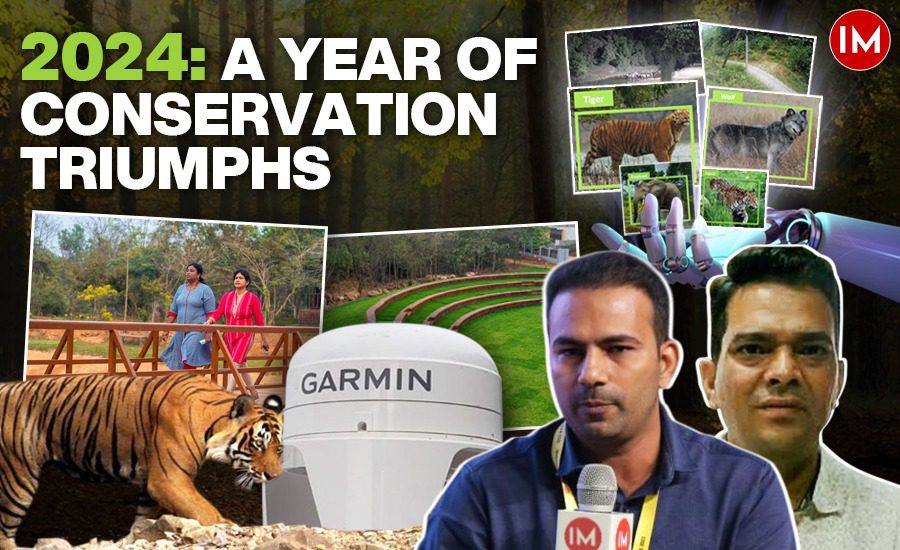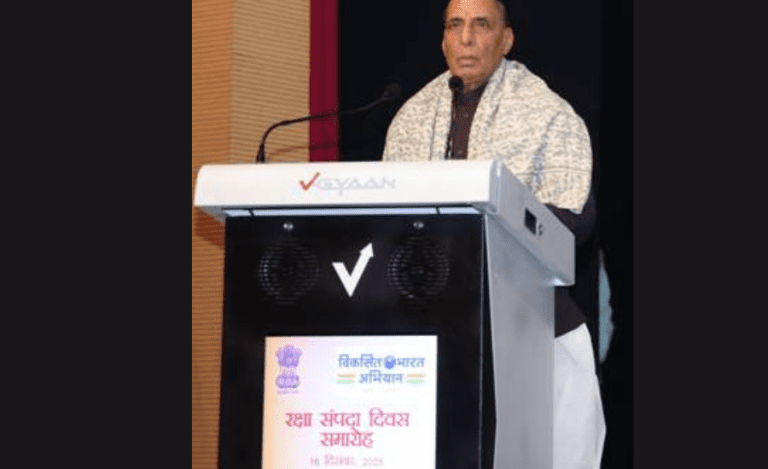As 2024 draws to a close, India’s green warriors have made extraordinary strides in wildlife conservation and environmental protection. From pioneering technological innovations to impactful conservation strategies, these dedicated officers have worked relentlessly to safeguard the country’s rich biodiversity. Their efforts have not only tackled the challenges of wildlife crime and human-animal conflict but also promoted sustainability and ecological balance. Indian Masterminds presents some of the best stories, showcasing the incredible dedication and ingenuity of these eco-warriors in the field of wildlife and environmental conservation.
India’s Wildlife Crime Conviction Rate Sees Historic Boost in West Bengal
The Jaldapara Wildlife Division in West Bengal, under DFO Parveen Kaswan, has set a national record by securing convictions for 17 smugglers in a year, including 13 involved in wildlife crimes and four in Burmese timber trafficking. This landmark achievement addresses India’s historically low wildlife crime conviction rate of under 5%. Smugglers of endangered species like rhinos, leopards, and pangolins received 3-5 year sentences, sending a strong deterrent message.
Key arrests included rhino poaching kingpin Rikoch Narjari and public representative James Borogaon, convicted for pangolin smuggling. These successes resulted from meticulous intelligence, interagency coordination, and a dedicated team, including Range Officers Rameez Rozer and Biswajit Bisoi. Despite challenges like limited resources and forensic evidence, the team’s focus on airtight cases has disrupted transborder smuggling networks spanning Myanmar, Nepal, and Bangladesh. Their efforts have significantly strengthened conservation and set a new standard in wildlife law enforcement.
https://indianmasterminds.com/features/cracking-networks-of-wildlife-traffickers-in-india-100473/: 2024 Rewind: From AI to Tiger Relocation, India’s Green Heroes Set New Standards in Wildlife ConservationIndia’s First AI-Based Wildlife Monitoring System Launched in Kerala
India’s first AI-based wildlife monitoring system, launched in the Mankulam forest division, Kerala, marks a significant advancement in conservation. Spearheaded by 2015-batch Kerala Forest Officer Subhash KB, this initiative combines AI technology with real-time data to prevent man-animal conflicts and enhance biodiversity protection.
Developed in collaboration with Kerala’s Forest Wildlife Department, Government Engineering College Idukki, and UNDP’s India Heritage Mountain Landscape Project, the system uses AI-enabled cameras, Jetson Nano microcomputers, and SIM-based WiFi routers to detect animals like elephants, tigers, and leopards. Alerts are sent to local communities within seconds via Telegram, helping deter wildlife threats and protect crops.
An AI-powered app has also documented 180 butterfly species and other fauna with high accuracy, while live feeds from Anakkulam attract eco-tourists eager to observe elephants safely. This pioneering system showcases the transformative potential of AI in balancing conservation and community welfare, positioning Mankulam as a global conservation model.
https://indianmasterminds.com/features/beyond-headlines/how-ai-is-saving-lives-conserving-biodiversity-in-mankulam-forest-kerala/: 2024 Rewind: From AI to Tiger Relocation, India’s Green Heroes Set New Standards in Wildlife ConservationTiger Relocation and Conservation Strategies Bring Hope to Rajasthan’s Ramgarh Vishdhari
The Ramgarh Vishdhari Tiger Reserve in Rajasthan has successfully relocated tigers, marking a major step in restoring its ecological balance. Under the leadership of IFS Officer Sanjeev Sharma, the initiative began with the relocation of tigress T-102 from Ranthambore National Park. This was followed by the relocation of another tigress to pair with male tiger T-115.
The reserve, covering 1,501.89 square kilometres, now hosts six tigers, including three cubs, and has plans to relocate eight villages to reduce human-animal conflict. The efforts also include strengthening habitats, managing human-wildlife interactions, and developing tourism zones. With a focus on sustainable conservation, the reserve aims to become a thriving habitat for tigers and other wildlife. The project has set a benchmark for wildlife conservation in India to ensure the reserve remains a safe haven for generations to come.
https://indianmasterminds.com/features/roaring-back-to-life-how-ifs-officer-sanjeev-sharma-revived-the-ramgarh-vishdhari-tiger-reserve-95207/ : 2024 Rewind: From AI to Tiger Relocation, India’s Green Heroes Set New Standards in Wildlife ConservationOdisha’s Urban Forest Park, Ananda Bana, Promotes Sustainability and Biodiversity
Ananda Bana, an urban forest park in Bhubaneswar, Odisha, covers 89.05 acres and houses over 50,000 trees, transforming degraded land into a green sanctuary. The park, divided into two parts, features nature trails, water bodies, and diverse ecosystems, offering spaces for meditation, yoga, and relaxation. Developed under the Nagar Van project, it includes 12,000 Miyawaki plantations, enhancing biodiversity through dense, multi-layered vegetation.
The park is home to native plants, medicinal species, migratory birds, butterflies, and reptiles. It also fosters community employment, with local SHGs operating businesses within the park. With an estimated carbon sequestration of 500 tons per year, Ananda Bana improves air quality, reduces microclimate temperatures, and promotes ecological conservation.
The project, spearheaded by IAS officer Satyabrata Sahu and IFS officer Manoj Mohapatra, aims to inspire similar green infrastructure initiatives across the state, contributing significantly to climate change adaptation and biodiversity preservation.
https://indianmasterminds.com/features/beyond-headlines/welcome-to-the-nest-of-happiness-bhubneshwars-premier-urban-oasis/: 2024 Rewind: From AI to Tiger Relocation, India’s Green Heroes Set New Standards in Wildlife ConservationPench Tiger Reserve Becomes First in India to Use Sonar Technology for Combating Illegal Fishing
Pench Tiger Reserve in Maharashtra has become the first in India to deploy an advanced sonar system to combat illegal fishing in the Totladoh reservoir, a vital water body shared with Madhya Pradesh. The initiative, led by IFS officer Prabhu Nath Shukla, addresses the challenge of detecting submerged boats used by illegal fishermen. Traditional surveillance methods struggled due to the vast and complex terrain of the reservoir.
The newly installed sonar system, using compressed high-intensity radiated (CHIRP) technology, detects objects up to 500 feet away, offering a 360-degree view and enhanced precision. The system has already improved detection and response to illegal activities, with the potential to deter fishermen aware of the technology. This pioneering use of sonar in wildlife conservation could serve as a model for other protected areas facing similar challenges, marking a new era of technological innovation in safeguarding biodiversity.
https://indianmasterminds.com/features/how-pench-tiger-reserves-sonar-system-is-battling-illegal-fishing-93061/: 2024 Rewind: From AI to Tiger Relocation, India’s Green Heroes Set New Standards in Wildlife Conservation






























